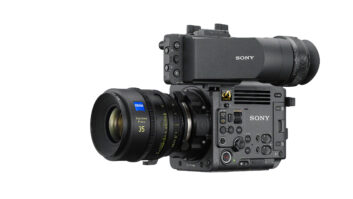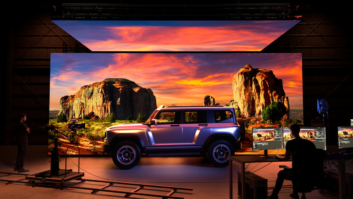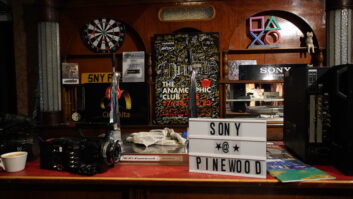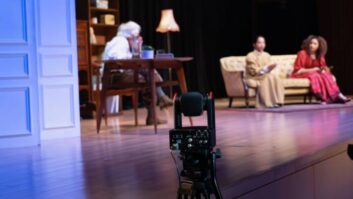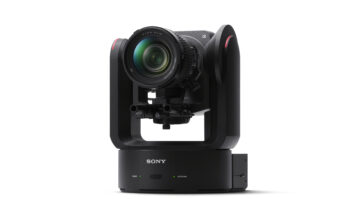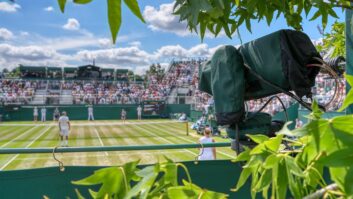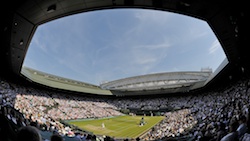
The All England Lawn Tennis Club and Sony have begun talks to extend their contract to produce the Wimbledon tennis championships in 3D.
More cameras and more matches will likely be introduced for next year’s event, but it will be an incremental increase only with logistical, financial and business issues hampering the ability of the production team to cover matches in exactly the way they would like.
Mervyn Hall, broadcast manager at the AELTC, professed to be “very pleased” with the 3D experiment to date and has opened talks with Sony about extending its three year deal which ends in 2013.
“We are talking to Sony and begun exploring what the possibilities might be,” said Hall. “We believe in starting these conversations early and we are very determined that this relationship should go further.”
He added: “3D is an expensive option. Sony is a very valuable partner and have a financial hand in it at a high level.”
The AELTC’s ambition for doing more 3D will depend on broadcaster demand, which this year was led by ESPN, but it is reluctant to begin covering more than the Centre Court in 3D because of fears it would negatively impact on its primary 2D coverage.
“The more 3D broadcasters that come on board, the more incentive there is for us to be able to generate more 3D coverage,” said Hall. “3D is not a cheap option but since it doesn’t ultimately touch on the host broadcast operation very much it’s a discrete spend.
“We might do more days. We might include additional camcorders for 3D studio excerpts and more 3D ISOs.”
The BBC revealed it is talking with three suppliers about introducing a 2D wirecam for 2013, all of which also offer 3D solutions.
BBC Executive Sport Producer Paul Davies said he anticipates more matches in 3D next year. “There certainly seems an appetite from broadcasters that if content is there they will take it. If it is made available by the club as a 3D host feed they will take it.”
The biggest problem however remains the constraints of space on centre court. “We have six 3D cameras around court and it’s been very hard to find a seventh and an eighth [position],” said Hall. “There is no point just putting them anywhere. We’d like more space but while that is not possible the production team is learning to get good coverage from six.”
An ideal main camera angle for example would be at the height and position of the Royal Box which is obviously out of bounds “so without some major reconstruction of the actual positions where the cameras can go we are stuck with the positions we have,” said Davies.
“We are trying our best to accommodate 3D cameras but it is challenging simply because of the compact structure and availability of places to put them on court especially when ESPN has additional cameras there and other broadcasters would like to have more,” he added. “So while 3D is not way down the pecking order it is not the most important. We have to complement what we’re doing in 2D with our 3D ambitions.”
With its retractable roof, Centre Court also has the advantage of offering predictable tennis, a consideration if your broadcast schedule is scuppered by rain.
One solution would be to produce a joint outside broadcast combining 2D with 3D camera positions and taking a 3D or a 2D cut from either left or right eye. The number of pooled cameras has increased this year (the panoramic camera on Henman Hill and the robotic track camera on Centre Court for example are converted into 3D) but despite a will to make it work, no model for ‘5D’ has been agreed.
Explained Hall: “The problem is we haven’t yet found a way to use 5D cameras which don’t, in our view, interfere a bit with the essential core service which is a 2D world feed. We are very cautious about impacting on that, but no doubt it can work out and sooner or later it will.
“There is also an editorial consideration. If we did it in 5D the direction would have to be the BBC’s since it is the host broadcaster and it would need to be directed in a 2D way because that is what is effectively paying the rent. That’s what broadcasters really want.”
The editorial production style of 3D broadcasts at Wimbledon, as honed by Sony and CAN Communicate, features fewer cameras, fewer cuts and longer dwell times on shots than 2D. In addition, the 3D director will navigate to either end of the court by way of a central 3D camera position to maintain a viewer’s understanding of their position relative to the action. In 2D a straight end-to-end cut is more common.
According to Davies: “5D is a real possibility but there are issues of resilience and making sure the output is not compromised in any way by any issues in 3D coverage. There is a nervousness about building 3D into one [5D OB] and there needs to be a bit more reassurance on that before it comes off.
“You would need to direct a 5D feed differently but you could build in different cutting techniques in terms of delaying cuts on certain cameras and then taking the left or right eye for the 3D output,” he said.
“There is some debate about the effectiveness of tennis in 3D. While it is very fresh and impactful there are some that think it doesn’t deliver as well in 3D as other sports like boxing or football.
“You can also argue that in those sports the jury is still out on 3D and ask whether the long term coverage of sport may be more like Super Hi-Vision.”
The BBC will get a chance to assess reaction to both during the Olympics.
“Watching 3D coverage is different from 2D and so is SHV different from either since you are using your own eyes to edit coverage. It throws up a question for us, which is what is the right way to cover a tennis match? Could it, for example, be covered from side-on in future?”
Wimbledon is also host to the London Olympics medal event, which will likely differ significantly from traditional match day coverage from SW19.
“We are the landlord and LOCOG has hired the site and we have no production input whatsoever,” said Hall. “OBS (Olympic Broadcasting Services) want to do things in a particular way and it will look very different in terms of the camera coverage.”
There will be, for example, a mix zone for post match interviews and OBS is building 40 new (temporary) identical commentary boxes in the north stand despite there being ample commentary positions already extant overlooking Centre Court.
By Adrian Pennington
